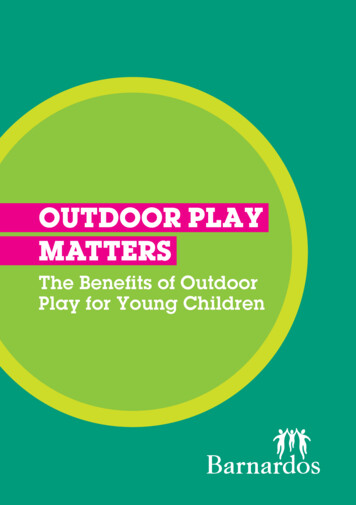
Transcription
OUTDOOR PLAYMATTERSThe Benefits of OutdoorPlay for Young Children
STHE BEST CLASSROOMAND THE RICHESTCUPBOARD IS ROOFEDONLY BY THE SKYMargaret McMillan, Educationist and Theorist of Nursery Education
IntroductionThis booklet is for parents and carers of youngchildren up to the age of six, although most ofthe information applies to children of all ages.It highlights the benefits of outdoor play andshows how playing outside supports yourchild’s development.Playing in an outdoor environment has hugebenefits for young children’s learning anddevelopment. It is great for young children’sphysical development and, while playingoutside, children also learn how to get onwith others and manage their feelings. Childrenalso tend to develop a more positive attitudeto learning when they are outdoors. They areusually more active, absorbed and involved,and they see a purpose in whatthey are doing.‘The chance to connect with the naturalworld; first hand experiences of life andgrowth; endless opportunities for creativityand imagination; improved fitness andphysical development – the countlessbenefits of outdoor play have a realpositive impact on children’s lives.’Into the Woods Outdoor Nursery, UK1
Thinking About YourOwn ChildhoodThink about your favourite place to be as a child, where youmost loved to play outdoors. Take yourself there for a fewmoments notice everything you can about that place –its size, its shape, what the light was like, any special smells,any sounds that remind you of it, any special features ofit that you treasure What was it about this place thatyou loved?The delights of the outdoors are among the deepest,most passionate joys of childhood. Very often, adultsremember and draw inspiration from magical experiencesin natural outdoor settings as their strongest, mostpowerful memories. The outdoors was, for many of us, aninvaluable place for learning. It provided opportunities forus as children to explore, to discover and to develop anunderstanding of the nature around us.Along with an instinctive drive to play, young children haveparticularly deep connections with nature and the outdoors.Sadly, if this is not encouraged, children may not maintainthese connections as they get older.The outdoors gives children unique opportunities for:2nnnnnnnExperience with all their sensesPhysical activitiesObservationsArt, science, mathematics, languageDeveloping social skillsBuilding and constructing with sand, water and mudDramatic play
Research has shown that children these days are missingout on these kinds of opportunities. There are many reasonsfor this such as lack of time and safe spaces for play, a lackof awareness of the benefits for children of playing outdoorsas well as negative attitudes about playing outside on thepart of some adults. The number of hours children spendon screens – using tablets, phones, computer games andwatching TV – has also grown significantly.Supporting young children to develop and nurture their sense ofwonder and awe can be best achieved in natural environments.3
What Can the Outdoors Offer?There are lots of benefits for young children when theycan spend as much time as possible playing outside ininteresting outdoor environments. Young children learnthrough the type of place or environment they are in.When they are outside, children have the freedom to shoutand make noise, the space to be more expansive in theirphysical movements, which sparks their imaginations,and more places to hide in and explore. Children can alsobe messier outdoors, which encourages them to be morecreative and to try things out and experiment.Richard Louv, author of eight books about the connectionsbetween family, nature and the community, says that‘children who play outside are less likely to get sick, to bestressed or become aggressive and are more adaptable tolife’s unpredictable turns’.4
Children get lots of physical exercise outside throughactivities like running, climbing, digging and swinging.Spending a lot of time getting physical exercise outdoorswhen they are young helps children to develop positivelifestyle habits that are good for their health generally,and also helps to prevent obesity. Children also get lots ofvitamin D from sunlight, which is vital for strong bones andteeth and a healthy immune system.Research shows that movement and thinking skills arepowerfully connected. Movement and activity encouragesbrain growth and improves children’s attention and theirmemory.‘The more you keep children sitting, the lessattentive they become.’Dr Tony Pelligrini, American Education ResearcherMovement is especially helpful for children with specialneeds.‘Limiting the right of children to be active throughoutthe day (and in all weathers) can lead to early signsof ADHD.’Marjorie Ouvry, Education Consultant and AuthorChildren’s well-being and their ability to understand as wellas to control their feelings and emotions also increasesfrom being outdoors as they relax and feel calm. Free playhas been shown to help children to heal from stress andtrauma in the same way as being able to cry does.5
Pretend playBeing noisyBeing messyDealingwith unevensurfaces andheightsDigging andplantingGetting dirtyor wetRunning andjumping6Trying outnew thingsCooperatingOutdoor playcan involve.Lifting,carrying andpouringFun andenjoymentBuilding andconstructingSometimesgetting smallcuts or bruises
The Value of PlayWhen your child is running around outside or making mudpies, you might worry that they are ‘only playing’ andnot learning things they need to learn. It is important toremember that play is one of the very best ways that youngchildren learn.Children learn through active, hands-on experience –playing, exploring, experimenting and discovering. Forexample, long before very young children begin to formspeech, they soak in the sights and sounds around themthat are essential to their language development.Children’s right to play is so important that it is recognisedin the United Nations Convention on the Rights of the Child(Article 31).The value of play is also recognised in Síolta: the NationalQuality Framework for Early Childhood Education, a set ofnational standards for all those who care for and educateyoung children (see www.siolta.ie for more information).In Síolta, the key role of parents, the value of play forchildren and the importance of where children spend theirtime learning and developing are all formally recognised.In Síolta it is clear that ‘Play is central to the well-being,development and learning of the young child.’Aistear, the National Early Childhood CurriculumFramework, also recognises that young children learn anddevelop by doing things, by playing and by having hands-onmeaningful experiences (see www.ncca.biz/Aistear). Aistear7
tells us that the place where young children play and learnshould allow them to:nnnnnnnnnnnExpress themselvesInteract with othersMake choicesTest ideas and materialsCreateDevelop and practice skillsStimulate curiosityDevelop consideration for others and independenceExplore and make discoveriesSolve problemsPersevere in the face of difficulties and uncertaintiesOutdoors is the perfect learning environment for all of these.Many outdoor playopportunities meetthe Aistear Identityand Belonging goal forchildren of showingincreasing confidenceand self-assurance indirecting theirown learning.8
CHILDREN LEARNTHROUGH ACTIVE,HANDS-ON EXPERIENCE– PLAYING, EXPLORING,EXPERIMENTING ANDDISCOVERING9
Play and Child DevelopmentPlay is active learning that brings together the mind, bodyand spirit. Until at least the age of nine, children learn bestwhen their whole self is involved. Their learning is holistic– they learn many different things at the same time andwhat they learn is connected to where, how and with whomthey learn. Later learning builds on early learning, so youngchildren’s learning grows layer on layer from birth, whichmeans that their early learning impacts on what they canlearn later.When they are playing, children can relax and this meansthat they are more open to learning. We know too thatchildren use their play to work through and make senseof their everyday experiences and of important things intheir lives that affect them strongly emotionally. Examplesinclude things like a new baby in the family, a trauma or aloss, or any anxieties or worries that they may have.Play also plays a vital role in children developing high-levelskills like being flexible, making decisions and planning.Brain developmentWe now know from research in biology, in neuroscience,in genetics and in psychology that, aside from what achild inherits through their genes, the development ofthe actual structure of a child’s brain depends on theexperiences and opportunities they have as they grow.10
This early development of the brain forms the foundationof a person’s lifelong ability and capacity to learn, to adaptto change, to have resilience (cope with stress) and tobe strong in unexpected circumstances, as well as thefoundation of their physical and mental health.‘Early experiences determine whether a child’sdeveloping brain architecture provides a strong orweak foundation for all future learning, behaviourand (both physical and mental) health.’Center on the Developing Child, Harvard UniversityThe experiences young children can have during qualityoutdoor play will have a powerful effect on the growth oftheir brains, creating a strong foundation for all of theirfuture development.Becoming familiar with and using a variety of print in an enjoyableand meaningful way is a learning goal of Aistear under the themeof Exploring and Thinking and the theme of Communicating.11
What Can Children LearnDuring Outdoor Play?More than you might expect!Children who can play freely with their friends develop skillsfor seeing things through another person’s point of view –cooperating, helping, sharing and solving problems.The development of the senses of smell, touch and taste,and the sense of how they move through space (known asproprioception) are also best learned through experiencesoutdoors. These aspects of learning and development arejust as important as (and also connected to) learning howto read, write or do maths.Outdoor play and theexcitement involved init, whether it involvesplaying in the sand orin the mud, playingwith water, jumpingin puddles, crawlingthrough tunnels,balancing on logs orbuilding dens can helpchildren in many ways(see opposite page).12
Outdoor play helps children to.Build theirstrength andresilienceDevelop theirlanguage andcommunicationskillsDevelopself-controlDevelop theability to share,take turns,cooperateLearn aboutthe outdoors, theweather and theseasonsBecome moreindependentWork outways to geton with otherchildrenGet over someof their fearsLearn moreabout theirbodiesLearn aboutdecision makingand problemsolvingTest theirabilitiesUse anddevelop theirimaginationDevelop conceptualabilities – the ability toimagine an idea withoutactually seeing it in practice.This is a higher logic andmental exercise, and a reallyimportant foundation formaths and scienceCope betterwith stressMake moresense of theirworldDevelopthe ability topersistExperienceadventureImprove theirself confidenceand self esteemDevelop theirimmunity13
The outdoor play space:n Provides a place full of meaning for children to gainunderstanding and skillsn Makes learning fun and enjoyablen Encourages children to explore and discovertogether and on their ownn Allows children to add to what they know andare learningn Allows children to practice skillsn Allows children to test how much they are able to don Encourages children to experiment and take risksOpportunities to engage, explore and experiment in theirenvironment and use new physical skills including skills tomanipulate objects and materials meets one of the learninggoals under the theme of Exploring and Thinking in Aistear.14
Play and Risk‘Children will fall and will get bruises because thatis part of their learning.’Marjorie Ouvry, Education Consultant and AuthorIt is common for parents to worry about children playingoutside, but exploring, solving problems and testing how farthey can go is how children learn.You might sometimes find yourself saying things like“Watch out, you’ll fall” or “You’ll get dirty” or “That’s toohigh”, but children need to experience challenge and ifyou are doing this constantly, it suggests to your child thatyou have doubts in their abilities and this can underminetheir efforts. Suggesting to a child that they are likely tofall may even lead to them falling through ‘the power ofsuggestion’. Often too, the amount of risk involved is lessthan you might think.Simply being told about possible dangers is not enough– children need to see or experience the consequencesof not being careful. By engaging in exploration andadventure, taking risks and meeting challenges they canlearn what they are able to do as well as the limits of theirphysical capabilities.Children, therefore, need to be given the chance to ‘have ago’, to try new things, to test out their own ideas of whatthey can do and explore a range of outdoor activities. This,at times, may involve getting dirty, trips, falls and someminor cuts and bruises or some tears. However, it is theseexperiences that are an important part of learning anddeveloping confidence.15
Everyday life always involves a degree of risk and childrenneed to learn how to cope with this from an early age.They need to learn how to take calculated risks. For thislearning to happen, children must have opportunities forchallenging and adventurous play and to move andact freely.For example, a child playing with large boxes may want tosee how high they can build them or climb on them whilea child with a large bucket may want to see how muchthey can fill it and still be able to carry it. They can onlyanswer these questions for themselves by being allowedto try. Being outside with extra space allows this to happenmore freely and gives them the opportunity to learn whatworks and what doesn’t and about weight and the powerof gravity.16
Weighing up the riskSetting too many limits and not letting children play for longperiods of time outside could lead to:nnnnnnnnToo much time without movementChildren being overweight or obesePoor ability to get on with othersPoor physical skills, such as the ability to throw, to runand to balanceReduced self-confidenceReduced ability to concentrateReduced creativityReduced ability to cope with new and differentsituations or to solve problems‘One of the best ways to help children to learn aboutrisk is to teach them how to deal with difficult andtricky situations by allowing them to experience themin controlled conditions. Removing risk is not theanswer. Life is not risk-free. Risk needs to be part of achild’s education.’Chief Inspector of Schools, Ofsted, UK17
It is important that all of those who are responsible forchildren follow appropriate safety procedures and assessthe risk involved but, as a parent, you need to accept thatif your child takes part in outdoor activities, there is alwaysgoing to be some element of risk.Being aware of their bodies and their changing abilities, discovering,exploring and showing good judgement when taking risks are someof the learning goals for young children under the theme of WellBeing in Aistear.18
THE REAL RISK FORT ISCHILDREN’S DEVELOPMENTIS THAT THERE IS NO RISK!Prof. Anita Bundy, Occupational Therapist, University of Sydney19
The Learning Opportunities inPlaying with WaterIn an article written for Community Playthings on Makingthe Most of Water Play, Dr. Sandra Crosser looks at the manythings that young children can learn from water play. Thefollowing is adapted from what she says.Water play is suited to all children regardless of the child’sability or disability, age, language, gender, culture or needs,and is a wonderful learning tool. Water is also fascinatingand intriguing, children are always eager to explore it.Outdoor play with water can involve anything from puddles,spray bottles and garden sprinklers to paddling pools,streams and the sea.What can children learn from water play?Water play helps problem-solving and thinking skills ingeneral and it particularly helps the development of thefoundations of maths and science and the essential buildingblocks for later learning. It can also help the development ofphysical skills, promote social learning and cooperation, andenrich language experiences.Children have a drive to make sense of their world andplaying with water can be one of the puzzling, new andunusual situations that can promote learning. With the timeand opportunity for lots of exploration, a child will developmeaningful ideas about how things work.Playing with water can help to challenge children’s existingways of thinking. For example, a child playing with a varietyof objects in water might come to the wrong conclusion20
that all heavy objects sink and light objects float. If thatchild comes across an object that is heavy but also floats,such as a log, this will not fit in the child’s idea of floatingand sinking objects and they will be challenged to adjusttheir original thinking.Learning mathsThe following list contains just some of the maths conceptsthat can be learned through playing with less thanLearning scienceWater play leadschildren to askquestions, “What doesit do?”, “How can Ichange it?” Curiosityleads to experiments,which provokes evenmore curiosity andmore questions tochallenge and wonder.Wonder is what drivesscientists to explore.21
Learning physical skillsPhysical skills aredeveloped through usingwater – the use of bothlarge and small musclesas well as the skillsneeded to match eye andhand movements.n Children use large muscles as they lift buckets and usebig sponges.n Eye-hand coordination is practiced as children catchthings in the water with nets, scoops, sieves and theirfingers.n Small muscles are used to fit plastic tubes on to funnels,pour water from container to container or to squeezebottles and sponges.Learning social skillsWhen involved in anyform of play, childrenhave many opportunitiesto learn about sharingof materials and ideas.Even playing on theirown means they mustconsider the needs ofothers, for example,if they want to splashwater they need tomake sure nobody elsegets wet.22
Learning languageWhen children play, they use and learn language naturally.Words such as sieve, funnel, surface, whip, pour, flow andstrain add to the young child’s vocabulary and allow themto express themselves more clearly. Words about position –beside, above, through, over, under – and words about howone thing relates to another – larger, smaller, last – grownaturally out of water-play experiences.‘It is important to understand the concept of upsidedown before understanding the difference betweena letter “b” and a letter “p” or a number “6” and anumber “9”.’Marjorie Ouvry, Education Consultant and AuthorChildren learning English as a second language particularlybenefit from the language and chat that flows whenchildren work together or side by side.23
Contact with Nature andNatural Materials‘ regular contact with nature is part of a balanceddiet of childhood experiences’.Tim Gill, Writer, Researcher and Consultant on ChildhoodAll the expensive equipment and all the indoor materialsproduced by the best makers in the world cannot replacethe experience of hands-on involvement with naturalmaterials.nnnnnnThe sparkle of sunlight through leaves or on waterThe sound and movement of plants and trees in the windThe look and feel of a cobwebThe sight of butterflies, ants or other insectsThe imaginative possibilities of mud or a pile of sandThe feelings and sensations involved in playing with waterWhen children are free to follow their own interests using‘open-ended’ materials they learn to think for themselves.Open-ended materials or playthings are those that allowchildren to determine for themselves what to do with themand how to do it.Natural outdoor areas are full of open-ended opportunities.A piece of wood can be a mobile phone, a plate, a camera, atruck even a baby! Water can be tea, ice cream, even wine!Sand can be made into roads, it can be food and whenadded to water it can become cement. A cardboard box –as we all know – can be anything!24
‘Imagination is the source of every form ofhuman achievement’Sir Ken Robinson, International Advisor on Education25
What Can Parents Do?You can support your child’s enjoyment, learningand development by understanding the benefits thatoutdoor play – sometimes risky, sometimes messy andsometimes wet or cold – can provide. Being outside in allweathers and in every season gives children the chance toexperience ice and snow, sunshine and wind, the changingcolour of the leaves in autumn and the appearance ofgreen shoots in spring.Sometimes parents don’t like their children going outside toplay because they don’t want them getting dirty. Dr. AshokJansari, a Cognitive Neuropsychologist, says that ‘ lettingyour children go out and play and maybe even getting a bitdirty is actually a very good thing’.Learning aboutthe naturalenvironment and itsfeatures, materials,animals and plants,and their ownresponsibility ascarers is a goal ofAistear under thetheme of Exploringand Thinking.26
When your child is at crèche orpre-schoolOften, early years educators ask parents to send theirchildren to their crèche or pre-school wearing comfortableclothes that they can move freely in, clothes that are nottoo good, and also to include a spare set of clothes. Someask that you provide sunhats, wellies or raingear too. Thishelps them to provide as wide a range of valuable outdoorexperiences as possible for your child without having toworry about how you, as a parent, might react if their childgets dirty or wet or damages their clothes.It is also helpful for your child to feel free to get fullyinvolved in whatever outdoor play experiences andopportunities are provided without feeling concerned thatyou might be cross with them if they get dirty or wet oraccidently tear their clothes. Your crèche or pre-schoolmay welcome donations of old clothes or wellies that yourchild has grown out of so that they can have a supply forother children who might need them.Some pre-schools or crèches may also ask for old kitchenutensils such as sieves, colanders, saucepans, woodenspoons, jugs, containers, baking tins and other items thatcan be used for imaginative play outside in the sand, mudor water. They may also be delighted to get open-endedmaterials like the large cardboard boxes you get when youbuy something like a new washing machine or fridge.It is also very important to remember the benefits of riskyplay for your child’s healthy development and to be open27
to discussing with the staff at your crèche or pre-schoolwhat activities you feel confident about allowing andsupporting your child to participate in.Other things that you can don Provide as much opportunity as possible for yourchild to experience and play freely in natural outdoorenvironments – the garden, the local park, the beach,the woods or the local playground.n Support your child to be physically active, allow them toexplore and encourage them to be imaginative.n Encourage your crèche or pre-school to provide asmuch time outdoors as possible for your child by lettingthem know that you value and appreciate the learningopportunities this kind of play can provide and are happyfor your child to be outside in all weathers.n Ask to see the service’s policy on Outdoor Play.n Ask about your crèche or pre-school’s approach to RiskyPlay and about whether they consider the benefits forchildren as well as the possible risks.n Consider volunteering to support visits by the serviceto local natural environments such as parks or woods.n Show your child that you are interested in what theyplayed while they were outside at crèche or pre-school.There are further ideas around play on the following e/en/Curriculum and Assessment/ParentsYou can find more resources for parents on www.barnardos.ie.28
When I’mplayingoutsideningI’m ngAnimalsActionCalculatingBelongingCaringCause and Effect Chemical Reaction CommunityClassification Creative Thinking Construction Co-operationDensity Communication Creatures Culture onHeightInvestigation ering Patterning Physics Planning Problem SolvingPropulsionResponsibilitySpatialSelf ntationScientific nsTemperatureVolumeRiskWeightTeam WorkWeatherAnd so much more!Playing outside makes me happier, healthier, smarter29(adapted from www.letthechildrenplay.net)
BarnardosChristchurch Square, Dublin 8T: 01 4549699F: 01 4530300E: training@barnardos.ie or resources@barnardos.iewww.barnardos.ie 2014 BarnardosISBN: 978-1-906004-32-3This booklet was written by Marie Willoughby and produced in collaboration withKilkenny County Childcare Committee; Wicklow County Childcare Committee;Wallaroo Playschool, Cork; Irish Steiner Kindergarten Association. Thanks are due toGrassroots Preschool, Kilkenny and Glen Outdoor Preschool, Letterkenny, Co. Donegal.
Free play has been shown to help children to heal from stress and trauma in the same way as being able to cry does. 6 7 Outdoor play can involve. Running and jumping Pretend play Being messy Getting dirty or wet Fun and enjoyment Lifting, carrying and pouring Being noisy Sometimes getting small
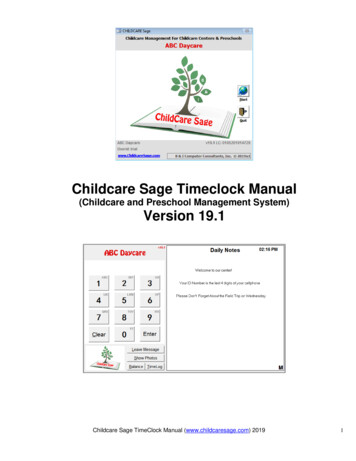
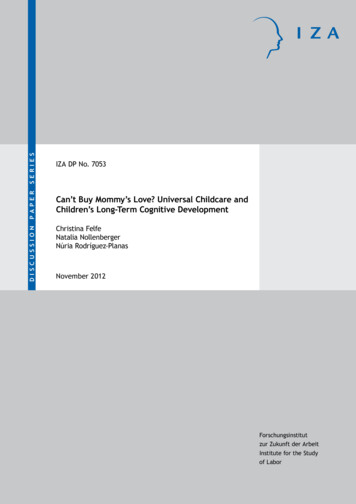
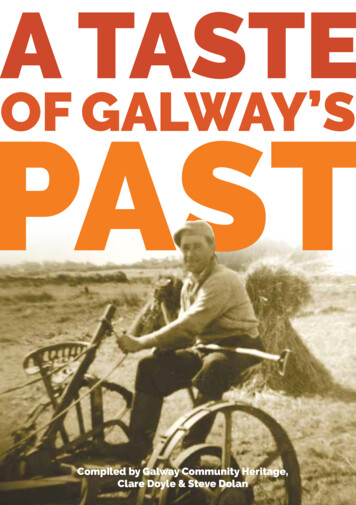
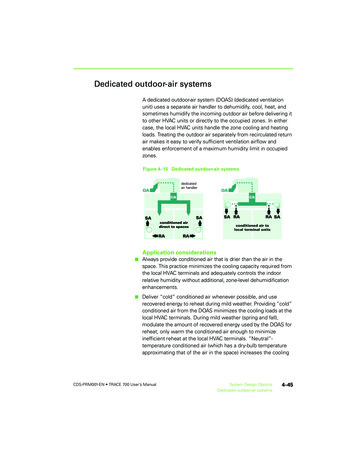

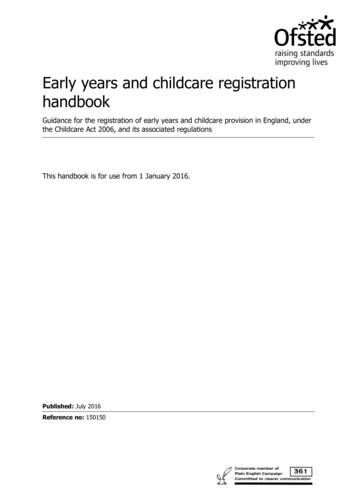
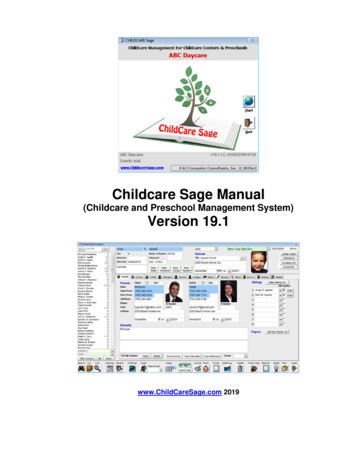
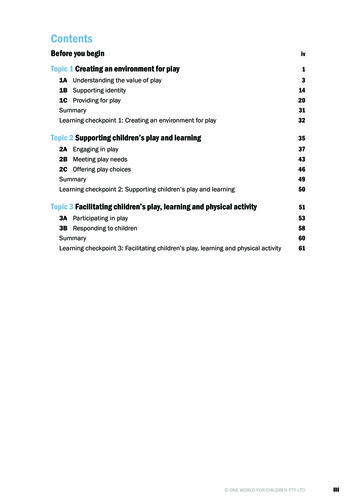

![INDEX [ westbewell.ie]](/img/33/mecc-directory-april-2022.jpg)
